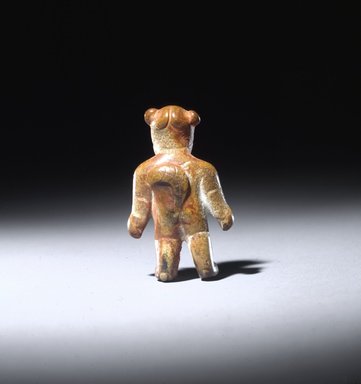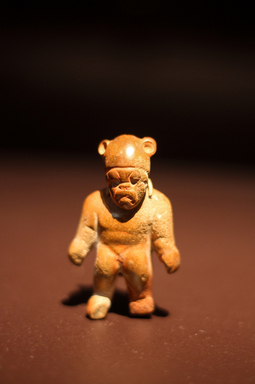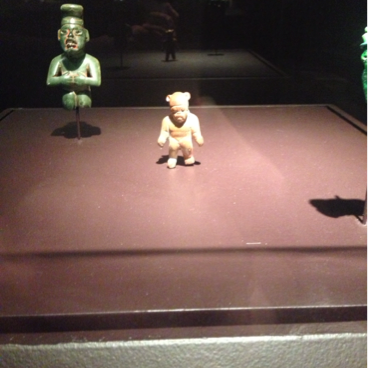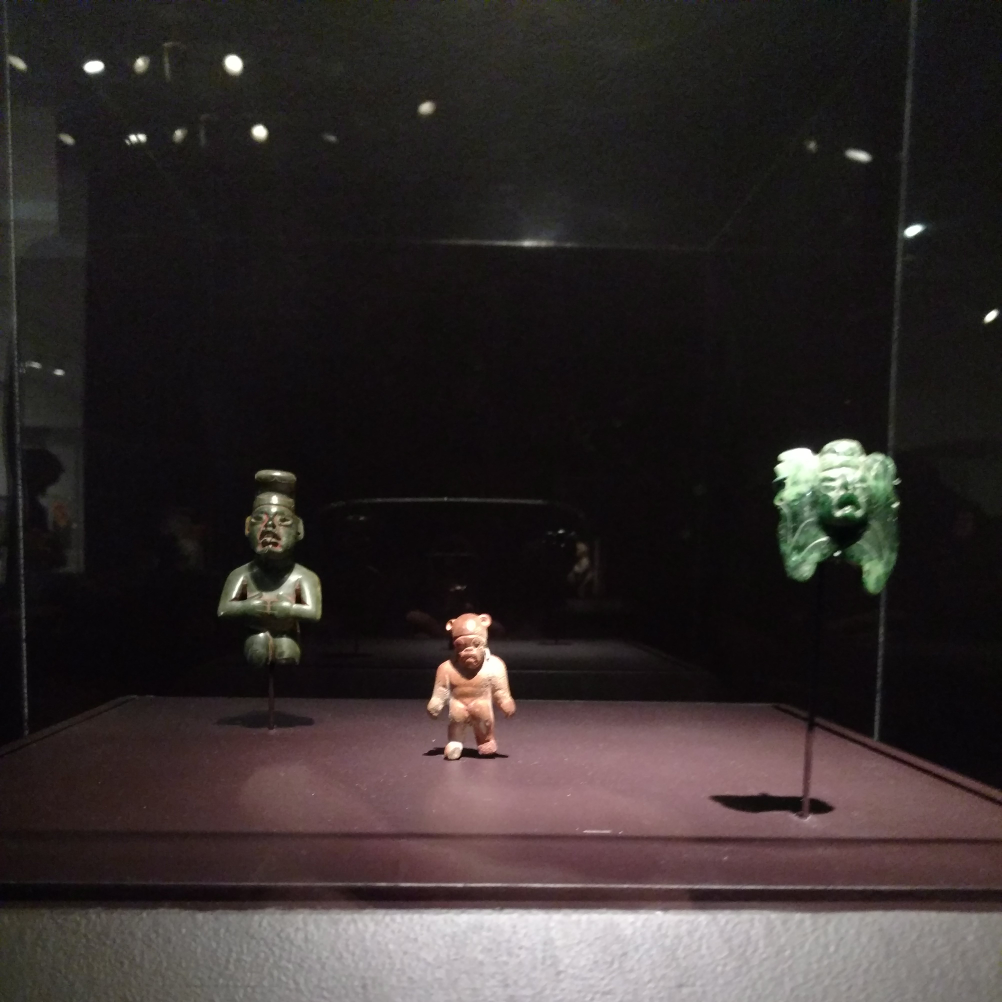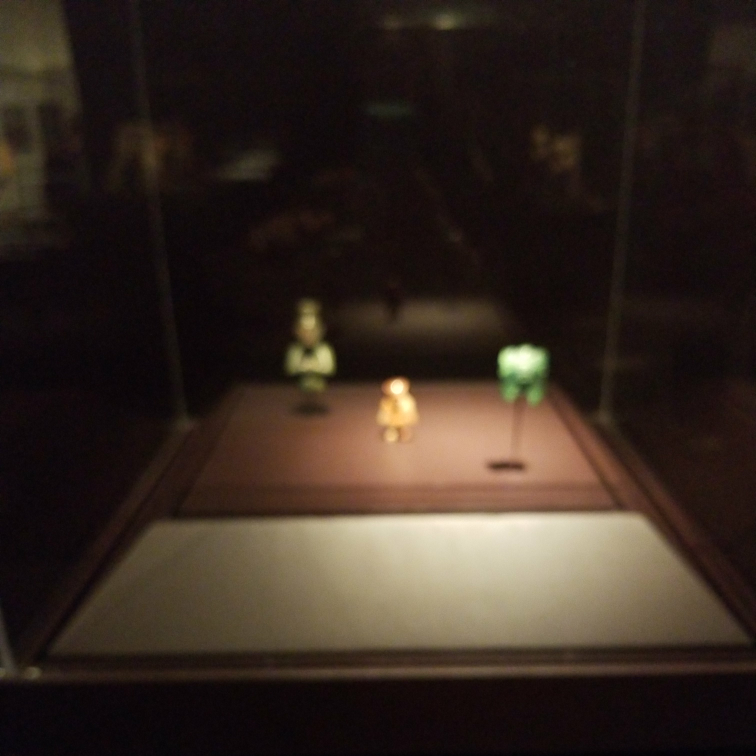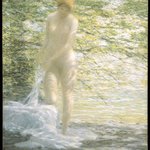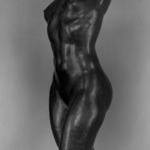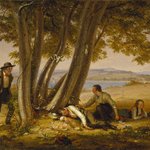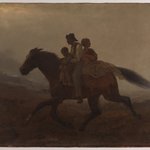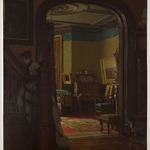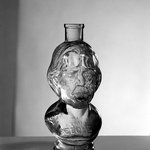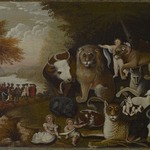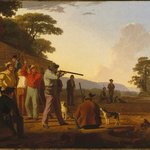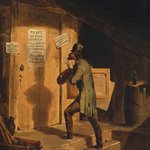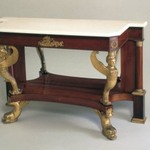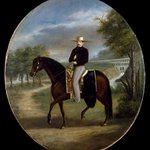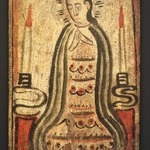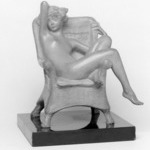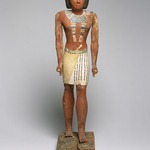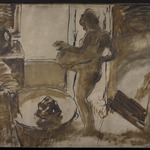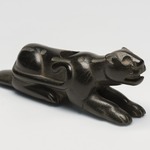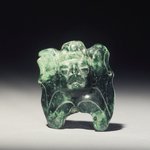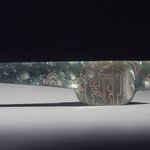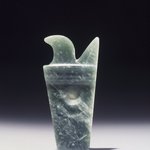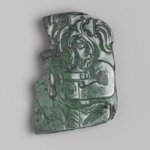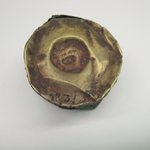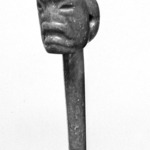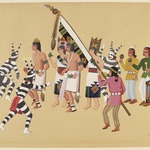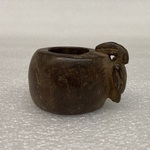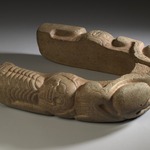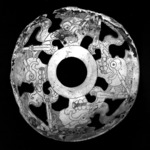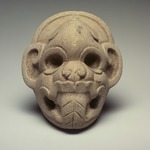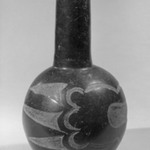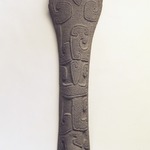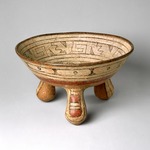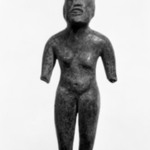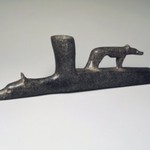

Olmec. Standing Figurine, 800–500 B.C.E. Felsite, traces of red pigment, 2 1/4 x 1 3/8 x 3/4 in. (5.7 x 3.5 x 1.9 cm). Collection of Christopher B. Martin, L75.15. Creative Commons-BY (Photo: Brooklyn Museum, L75.15_transpc003.jpg)
Standing Figurine
Arts of the Americas
The Olmec civilization (1400–400 B.C.E.) of Mexico’s Gulf Coast region produced small, portable figurines intended for ritualistic purposes. These three works display the characteristic Olmec sculptural features of a drooping lip and an elongated, flattened head. The winged figure and felsite figurine reflect the Olmec tradition of merging human and animal traits. Such composite forms relate to the ability of shamans, or ritual specialists, to transform themselves into animals. The wings represent those of a bat, associated with the darkness of the underworld. The figurine’s bushy tail and cap with feline ears suggest a jaguar, a sacred animal revered for its power. Jadeite and felsite were not native to Olmec ceremonial centers. Challenging to acquire and laborious to carve, they were valuable materials. The winged figure’s discovery in Costa Rica indicates the reverence for Olmec carvin
CULTURE
Olmec
MEDIUM
Felsite, traces of red pigment
DATES
800–500 B.C.E.
PERIOD
Preclassic Period or Middle Formative
DIMENSIONS
2 1/4 x 1 3/8 x 3/4 in. (5.7 x 3.5 x 1.9 cm) (show scale)



COLLECTIONS
Arts of the Americas
ACCESSION NUMBER
L75.15
CREDIT LINE
Collection of Christopher B. Martin
CATALOGUE DESCRIPTION
Small figurine carved out of reddish-brown felsite with the typical Olmec drooping-lipped face. The figure also has features of an animal such as a cap with feline ears and a long, bushy tail at the back, both suggesting that he is wearing a costume of an animal, perhaps a jaguar. The figure has two small drill holes at the eyes and at the downturned corners of the mouth.
EXHIBITIONS
MUSEUM LOCATION
This item is not on view
CAPTION
Olmec. Standing Figurine, 800–500 B.C.E. Felsite, traces of red pigment, 2 1/4 x 1 3/8 x 3/4 in. (5.7 x 3.5 x 1.9 cm). Collection of Christopher B. Martin, L75.15. Creative Commons-BY (Photo: Brooklyn Museum, L75.15_transpc003.jpg)
IMAGE
overall, L75.15_transpc003.jpg. Brooklyn Museum photograph
"CUR" at the beginning of an image file name means that the image was created by a curatorial staff member. These study images may be digital point-and-shoot photographs, when we don\'t yet have high-quality studio photography, or they may be scans of older negatives, slides, or photographic prints, providing historical documentation of the object.
RIGHTS STATEMENT
Creative Commons-BY
You may download and use Brooklyn Museum images of this three-dimensional work in accordance with a Creative Commons license. Fair use, as understood under the United States Copyright Act, may also apply.
Please include caption information from this page and credit the Brooklyn Museum. If you need a high resolution file, please fill out our online application form (charges apply).
For further information about copyright, we recommend resources at the United States Library of Congress, Cornell University, Copyright and Cultural Institutions: Guidelines for U.S. Libraries, Archives, and Museums, and Copyright Watch.
For more information about the Museum's rights project, including how rights types are assigned, please see our blog posts on copyright.
If you have any information regarding this work and rights to it, please contact copyright@brooklynmuseum.org.
RECORD COMPLETENESS
Not every record you will find here is complete. More information is available for some works than for others, and some entries have been updated more recently. Records are frequently reviewed and revised, and we welcome any additional information you might have.
